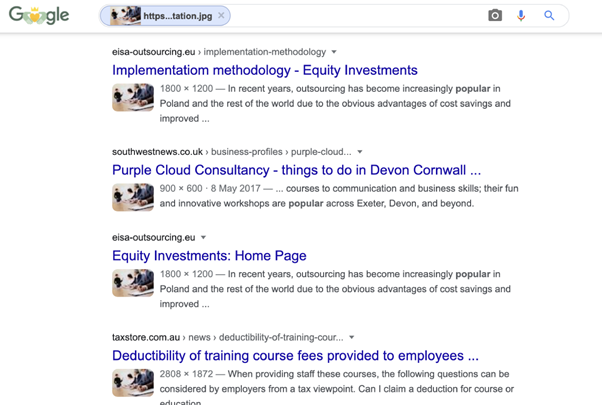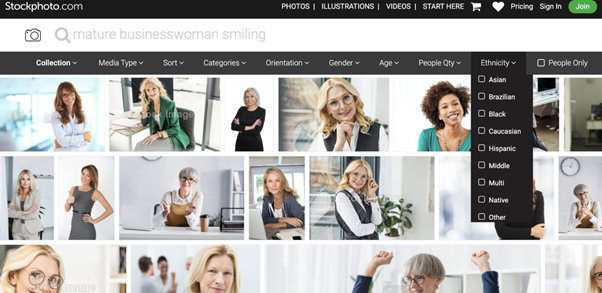How to Choose the Right Stock Photo
There are thousands of stock photo websites and libraries out there, it can be overwhelming. There are so many millions of choices available. In this article, we take you through practical ways to choose the right stock photo for your needs.
Planning
Before we even begin looking, we need to consider how we will be applying this image. Is it for social media, or blog post or online content? Perhaps it’s for a poster, a pamphlet or for a logo design? This will drive what the budget, licensing and the image size needs to be.
In order to choose the right stock photo, the next consideration needs to be the purpose. Will the image be used to reinforce a statement made in the text, or is it designed to illustrate something else? Perhaps it’s even just a background or design elements within the design.
Finally, we also need to consider the other colour elements within the design. We want whatever image you choose to work with the surrounding area nicely, or perhaps influence the surrounding area. It’s no point in choosing an image with a bold yellow background if the rest of the design is bright orange; these colours are likely going to clash and look terrible.
Choose your stock library
Now that we are armed with all the above information, now we can start looking at various stock image libraries, to find the right stock photo for your needs.
The downside of stock photos and illustrations, etc is that anybody can purchase them and use them. This makes them a lot more affordable, if course, however this also means that there is a chance your chosen image will be used by a competitor or someone else in the same geographic location.
I tend to use a handful of different stock libraries, and try to find less popular ones to purchase from. The way I look at it, is that the biggest libraries are big because they have so many customers - that is, so many people vying to use that same photo or stock media.
We know that Shutterstock and Getty are huge players. It may be better suited for you to try using lesser-known libraries, such as Stockphoto.com. In fact, if you search, there are plenty of other libraries - I’m talking hundreds - out there to choose from.
Here’s an example of one image from a major stock library being used on no less than 928 articles and websites.
Tip: You can use Google Images to do a reverse image search of your favourite stock photo choices, to avoid the above happening to you.
Using keywords and search filters
The next step from here is trying out a few keywords, and search filters to try and limit what you’ll need to look through. For example, Stockphoto.com which I mentioned earlier, has 130 million stock images to choose from. At one second each, it’ll take you four years to look at them all!
I mentioned competing purchasers using the same images earlier in this article. That’s why, when I am on the hunt to choose the right stock photo for my design project, I tend to avoid the cliche images (two hands shaking, lady in business suit on phone) and try to go for more abstract or different images.
For example, if you want a picture to represent “law”, do you have to show a man in a suit, or a shelf of dusty leather bound books? How about using “scales”, or searching for “courthouse” instead?
This is where your keyword mastery comes into play. Instead of searching ‘business’ like every other person does, try something far more specific.
Searching “business” gives me 15,211,078 results on iStockPhoto. Searching “mature businesswoman smiling” gave me a slightly more manageable 100,000 results.
Some libraries give you plenty of other options to choose from too. Firstly, obviously is the orientation; will the image need to be portrait or landscape? Then there’s often image size, or in the case of the screenshot below, some stock photo libraries even allow you to filter by gender, age and ethnicity.
Never just settle on the first page either, keep tweaking the various filters and changing keywords until you find a handful of images that may suit.
If this design project requires others to approve the stock photo, then most stock libraries will allow you to download a ‘comp’ or composite image. This is a watermarked, small version, just to illustrate how it would look within a design.
Choosing the right size
When you’ve finally settled on that perfect image, you need to consider size and future potential use. I’ve had situations where I have bought an image for social media (so, typically only 72dpi and under 3,000 pixels) and then had my client ask to use it on a magazine ad, which requires far larger resolution and size.
Always really consider what you could possibly use it for, down the track. It is easy to scale an image down, but never easy to do the reverse. When you choose the right stock photo, I tend to err on buying the larger size, unless I am absolutely positive I will never require it.
Choose your licence
Going back to the start of this article, where we discussed planning, this also has an effect on which stock license you may need.
For example, a social media post or typical website image only usually requires a ‘standard license’ on most stock photo libraries. Use on a brochure design for local distribution probably also a standard license. However, an image used on product packaging or a national magazine, or maybe a product that is sold is likely to require a premium or extended license.
Here’s what one stock image library states;
“A Standard License allows you to use the content in all your personal, commercial and advertising projects.
An Extended License is required when you need the rights to resell a product that incorporates the content, or in an Editorial usage when the content is used for more than 500,000 aggregate print runs.”
All the major libraries will display their license terms somewhere on their websites. It really is worth understanding the differences, so you can avoid any legal nastiness later.
Let’s use that stock photo
Now you’ve settled on an image, you just download it and away you go? No! You want to do a few things. You want to ensure you keep the original downloaded image safe, and edit it and save it as a separate file (I have learnt firsthand what happens when we return years down the track and can’t find the original) and you want to record what library you purchased it from, and the relevant license.
In Summary
So there we have it. All the steps you should take to choose the right stock photo, and to have it on hand for your design project. Make sure to choose a great stock image that’s perfect for your needs, get the right size for future use, and make sure you know what the license allows.
About the Author
Lauren Clarke is one of the team at stock image library, Stockphoto.com. Lauren has spent years in graphic and digital design, however now spends more time writing articles than saving Photoshop layers as ‘Untitled Copy 2’.


